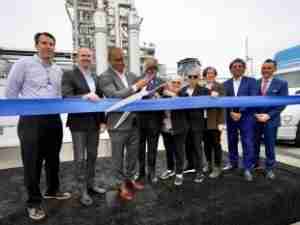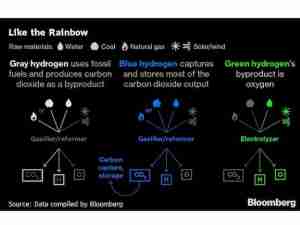Chinese investment in overseas lithium sector falters
Canada’s government ordered three Chinese firms on Wednesday November 2 to divest their investments in Canadian critical minerals companies on grounds of national security.
These three firms include Sinomine (Hong Kong) Rare Metals Resources Co Ltd, Chengze Lithium International Ltd (belongs to Chengxin Lithium), also based in Hong Kong, and Zangge Mining Investment (Chengdu) Co Ltd.
The divestiture will impact their previous and potential investment in these three lithium projects.
Though the divestiture order is not likely to affect the business operations of those three Chinese firms in the near term because all three lithium mining projects are still under early-stage exploration status, the latest attitude from Ottawa underscores the global competitions for critical battery minerals.
The order was made after "rigorous scrutiny" of foreign firms by Canada's national security and intelligence community, Industry Minister Francois-Philippe Champagne said in a statement.
Sinomine was asked to sell its investment in Power Metals Corp (approximately 5.72% of shares), which owns Case Lake project in Canada.
Previously, Sinomine had signed offtake agreement with the latter for lithium, cesium, and tantalum.
The Chinese company issued a statement on November 3 indicating that it anticipated a limited impact on its business arising from the latest divestiture order.
In addition, it said its investment in Tanco lithium project in Canada had been through the Canadian national security review procedures, and that therefore the latest order won’t impact operations at its Tanco project, which has a nameplate production capacity of 180,000 tonnes of spodumene after a ramp-up in 3Q this year.
Like Sinomine’s Case Lake project, the other two lithium projects impacted by this order, namely Lithium Chile’s Salar de Arizaro in Argentina, invested by China’s Chengxin Lithium and Ultra Lithium’s Laguna Verde Brine Lithium Project in Argentina, invested by Zangge Mining, are also under initial exploration stage, which means both projects are not estimated to contribute to the supply chain soon.
The divestiture order may slow the exploration and development progress.
Nevertheless, this order reinforces the competition for EV markets and the determination of some states to secure critical battery minerals, especially for lithium, a crucial component to produce EV batteries, which is also projected to run into widening deficit approaching the end of this decade.
It is estimated primary lithium minerals supply to stay about 8.5% short of the total lithium demand in 2025.
The spot lithium prices have jumped by over 200% in the past one year amid supply constraints.
China’s battery materials trade flow momentum persists
Imports and exports for the majority of battery materials has kept rising on both a monthly and yearly basis, but the imports of nickel intermediates and exports of lithium compounds were disrupted due to incidents taking place in late 3Q.
China’s imports of lithium carbonate kept rising in 3Q with increased cargo shipments from Chile.
The country’s lithium carbonate rose by 251% year-on-year in September.
Miners in South America have reported rising sales volumes this year – for instance, SQM, the largest lithium miner from Chile saw its second-quarter 2022 sales volumes of lithium jump by 41% on an annual basis.
China’s imports of nickel intermediates dropped by nearly 17% on a monthly basis in September, due largely to falling shipments from Papua New Guinea (PNG) in September.
An earthquake hit PNG on 11 September, causing huge disruptions to the shipment and production of mixed hydroxide precipitate (MHP) operations at the Ramu asset, operated by Metallurgical Corporation of China.
China’s graphite flake imports totaled 124,557 tonnes between January and September 2022, up by 202% compared to the same period last year.
Due to high prices of synthetic graphite as a result of rising feedstock prices, and a need to improve battery stability, anode manufacturers have increased the proportion of natural graphite in their products, which in turn has lifted demand.
China’s exports of lithium compounds, including both lithium carbonate and lithium hydroxide, dropped by 23% and 1%, respectively in September on a monthly basis.
This is mainly due to spot supply constraints following an 11-day lithium operations suspension in Sichuan province in August.
Sichuan’s lithium capacity accounts for nearly one-third of the total capacity in China.
Since all producers in the region have been busy delivering delayed cargoes, they have barely been any spot units to supply to those outside their list of long-term contract customers.
Susan Zou, senior analyst
+++
Electric vehicles
The US government further strengthens investment in the supply chain
Post the Inflation Reduction Act, the US has continued to pour investment to take on China’s position.
Twelve states have been granted access by the federal government to grants worth $2.8 billion to help domestic manufacturing of EV batteries.
This includes grants for critical minerals and cell manufacturing components.
The US is now starting to see significant investments as their intent to position themselves as a major player in the EV landscape.
There is ample opportunity in the market as witnessed by sales in 2022, with September reaching a 7% market share.
BMW had announced they will significantly increase investment in the US, to the tune of $1 billion at its EV factory in South Carolina, in addition to a $700 million battery plant.
This comes after Volkswagen’s investment into the region and as such is a clear indication the German automotive market is collectively responding by shifting various parts of their value chain to the US.
The implications for this will be far reaching, majorly as automaker investments will also entice cell manufacturers to form partnerships and expand their footprint.
SK Innovation will see significant rise in its production between 2023 to 2025, on the back of its partnerships with Ford, committing over 129 GWh in cell production by 2023.
Similarly, Panasonic has also accelerated their development of the plant in Kansas, aiming to begin production by 2025 with a capacity of 30 GWh.
Initially, they had held back investment due to rising costs, but the tax credits available to cell manufacturers greatly boosts their ability to continue investment into the US.






_-_28de80_-_58820516bd428ab3fd376933932d068c43db9a4a_lqip.jpg)




